By Bhamy V. Shenoy
Every Mysurean is familiar with Hoysala Temples in Belur, Halebeedu and Somnathpur. But how many have heard of the Sri Laxminarayana Swamy Temple at Hosaholalu, the Panchalingeshwara Temple at Govindanahalli and the Brahmeshvara Temple at Kikkeri?
Recently, when we visited these three Temples, we faced a tough time locating the Brahmeshvara Temple at Kikkeri. Google was not helpful and Kikkeri residents, except for those living very nearby, were not familiar with either. To our astonishment, we discovered that all these are heritage mini-jewels.
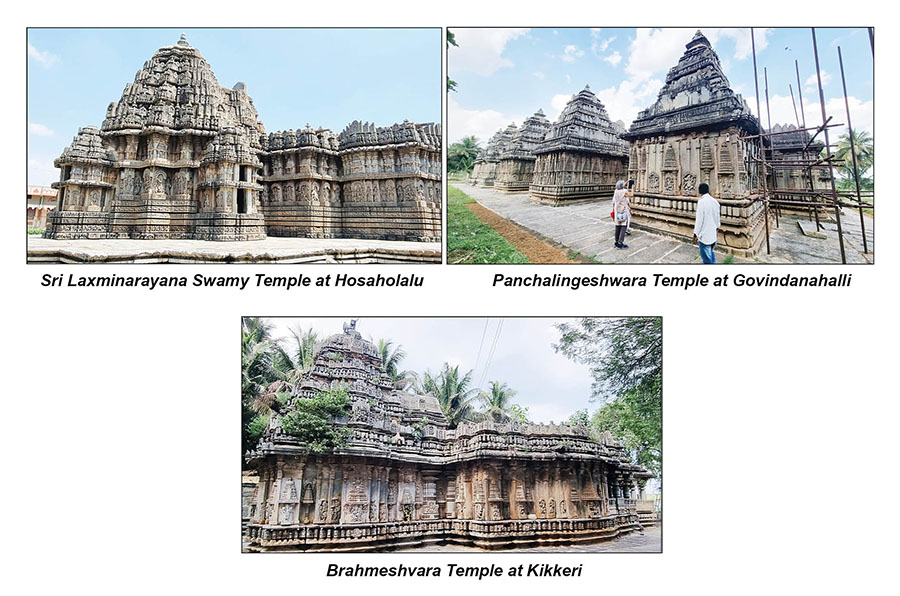
Sri Laxminarayana Swamy Temple
This is at Hosaholalu, 45 kilometres northwest of Mysuru and boasts Hoysala architecture and was built in the 13th century. The Temple is dedicated to Vishnu and is managed by the Archaeological Survey of India (ASI). It seems to be in good condition and was constructed by King Vira Someshwara of the Hoysala Empire. The Temple features three shrines, with only the central shrine having a tower (Shikara) on top. The main shrine is for Narayana, while the other two are for Venugopala and Lakshmi Narasimha, all three avatars of Vishnu.
The Temple showcases 120 panels of artwork, primarily related to the Vaishnavism tradition of Hinduism, but also includes panels from Shaivism and Shaktism. 24 sculptures of Vishnu depict him with his four arms holding his four icons – conch, wheel, lotus, and mace in various permutations. One frieze features depiction from the Ramayana, Mahabharata, and Bhagavata Purana.
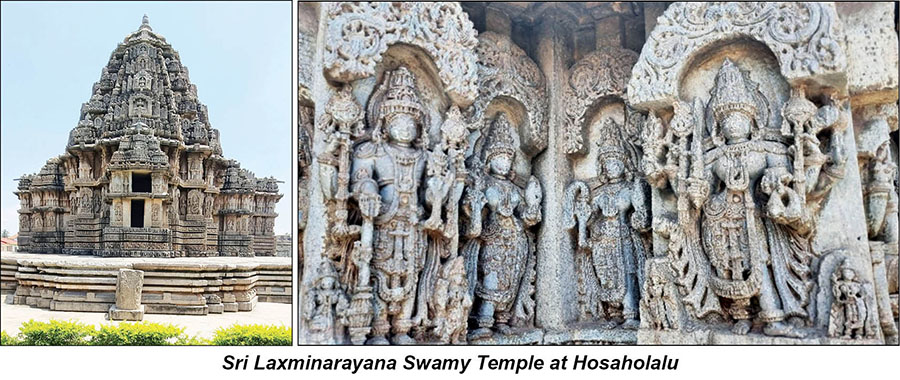
Exploring all these friezes can easily take more than two hours. As it was extremely hot, walking barefoot was impossible, but the helpful staff from the ASI on the premises shared valuable information about the Temple.
Panchalingeshwara Temple
After Hosaholalu, we visited the Panchalingeshwara Temple at Govindanahalli, which is 21 kilometres from Hosaholalu. It is a rare example of a five-shrine construction with five towers in Hoysala architecture. This is one of the rare surviving Panchkuta (five shrines) Temples. Each shrine’s sanctum (garbhagriha) is connected to a hall (mantapa), and all five Mantapas are linked by a long-pillared hall.
The entrance to the Temple complex features two porched entrances with ceilings supported by lathe-turned pillars, adorned with beautifully carved dwarapalakas.
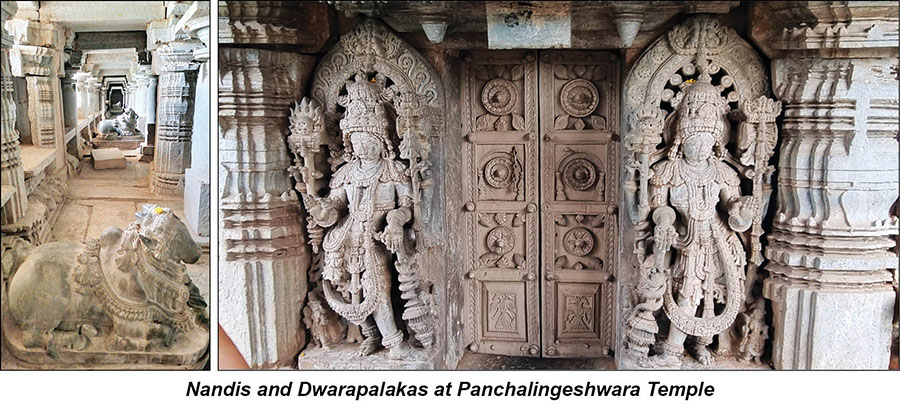
In front of each sanctum, you’ll find beautifully carved Nandi statues, and inside each sanctum, there is a Shiva Lingam. These five shrines represent different manifestations of Shiva — Sadyojata, Tatpurusha, Vamadeva, Aghora, and Ishana.
When we visited this Temple late in the afternoon, we were the only visitors. Unlike Chamundi Hill shrine, which has become a commercial centre and lost its spiritual aura, Panchalingeshwara provided a serene environment to reflect on the Hoysala era and the sustainable living style of the people. In front of the Temple, there is a beautiful Govindanahalli Lake that adds to the Temple’s charm.
Brahmeshvara Temple
In comparison to the other two Temples described above, this Brahmeshvara Temple is smaller and harder to locate. This Temple also dates back to the 12th century and belongs to the Hoysala era. However, unlike the other two which is under ASI, this one is maintained by the State Department. A glance at the poorly maintained surroundings would confirm this fact.
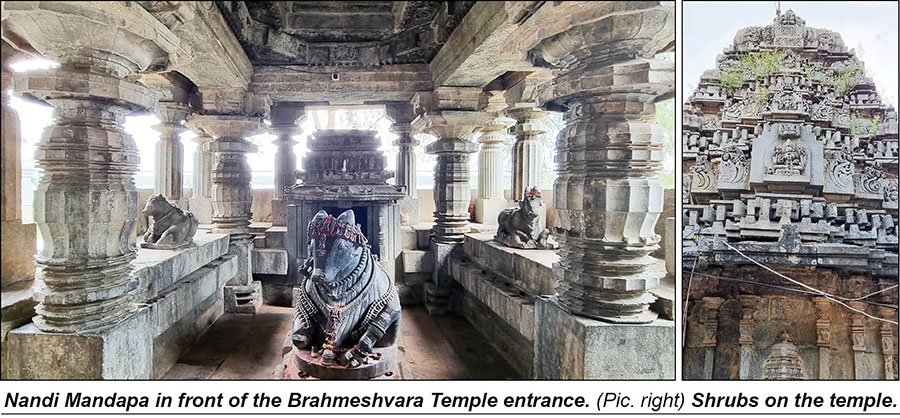
Located at a quiet village near the Kikkeri Lake, it provides an idyllic setting. However, without proper care, there’s a risk of plants, if not trees, growing on the Temple roof soon. A small well on the premises is also poorly maintained.
The Temple was completed in 1171 AD by a wealthy woman, Bammave Nayakti, during the rule of Hoysala King Narasimha. Unfortunately, a significant portion of the artwork outside the Temple has been defaced. However, the Nandi Mantapa in front of one of the two entrances to the Temple is exquisitely carved and a sight to behold.
Spiritual centres to promote sustainable tourism
If the Tourism Department or private tourist companies start promoting these three heritage jewels close to Mysuru, tourists visiting Mysuru are less likely to be single-day visitors and more likely to stay longer. Those of us in Mysuru who actively support the sustainable development of Chamundi Hill can learn valuable lessons from these three Temples.
All these Temples, besides being rich in history and heritage, provide tranquil environments that inspire people to meditate and serve as spiritual centres. However, all three lack toilet facilities, and immediate attention should be given to remedy this situation.
If they start attracting large numbers of visitors, the Government should not allow shops to open near these places. While there is no scope for this in Kikkeri, the other two Temples have the potential to become commercial centres, and we must heed author Dr. S.L. Bhyrappa’s warning about the “tourism kills tourism” virus affecting them.



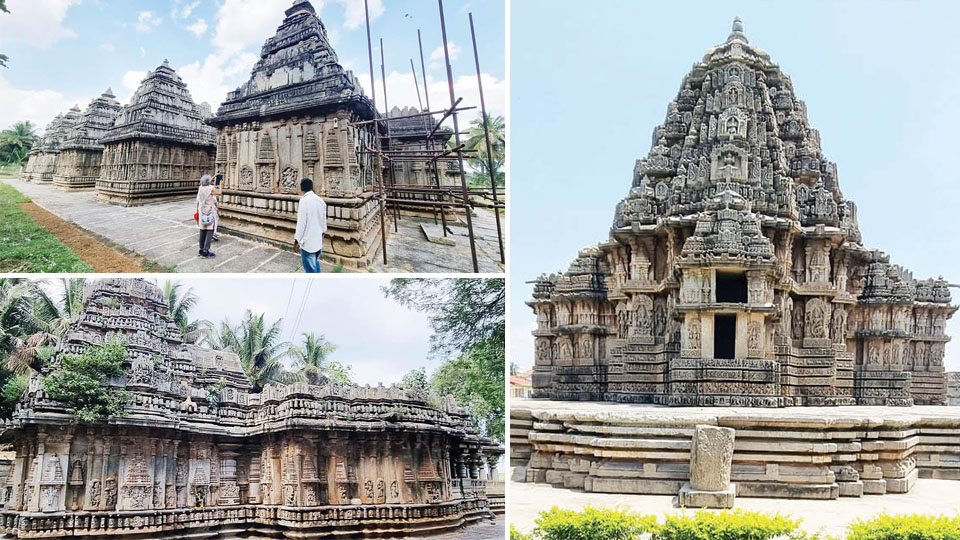
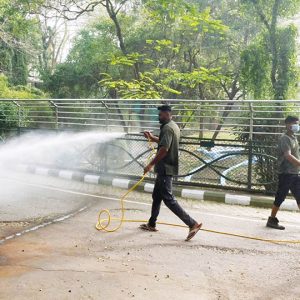

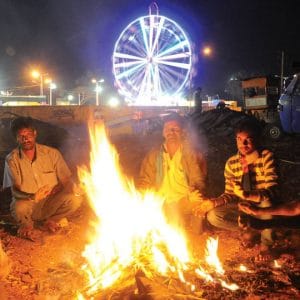

Recent Comments